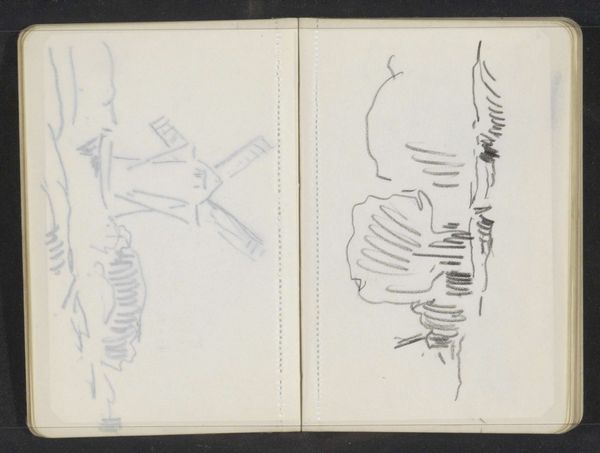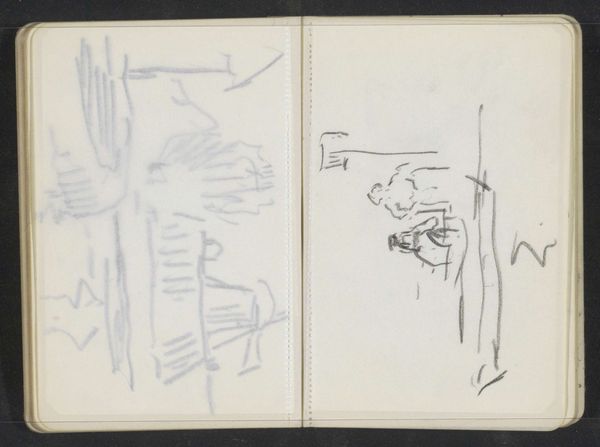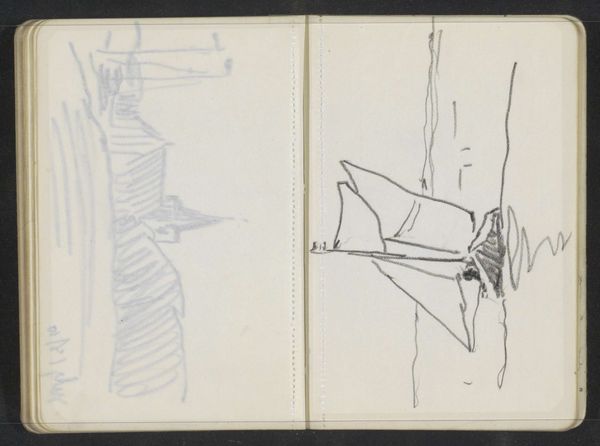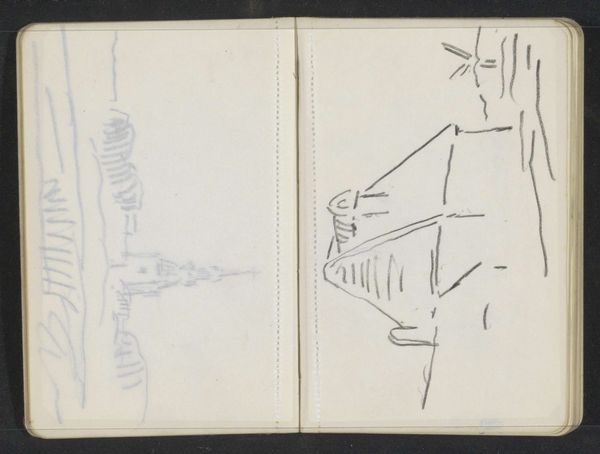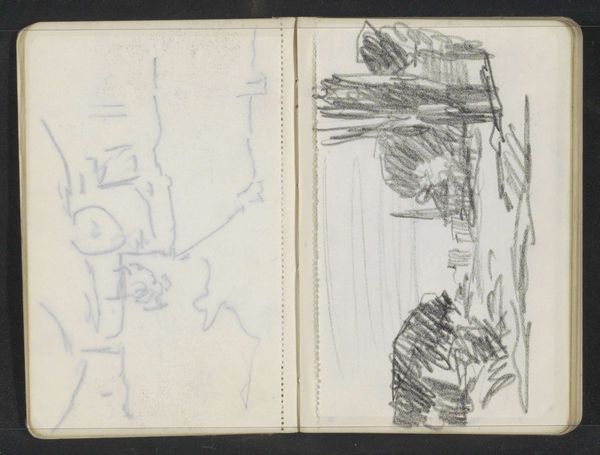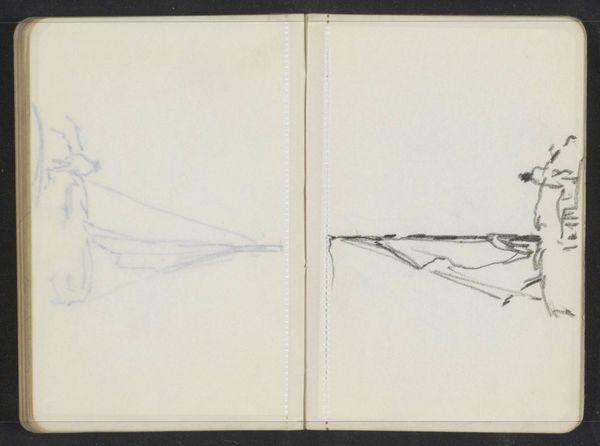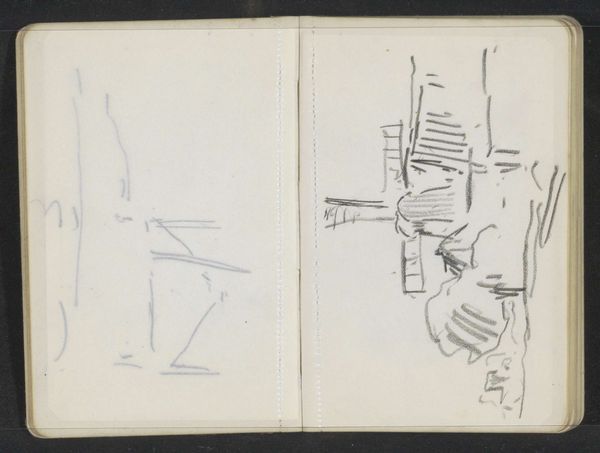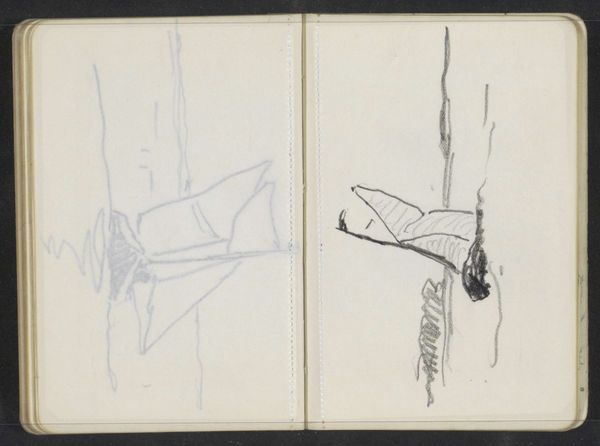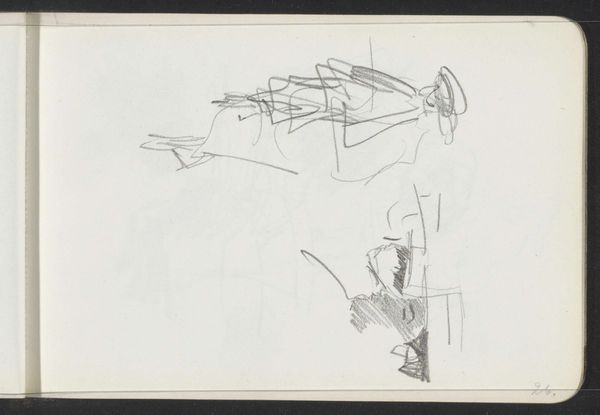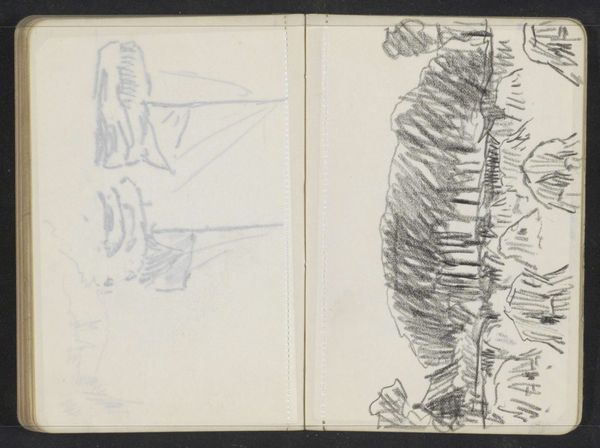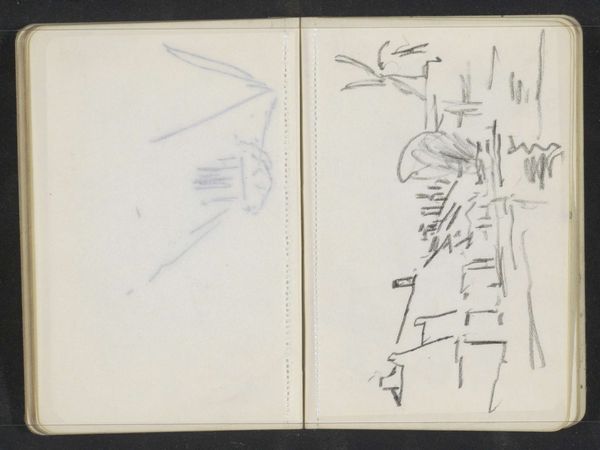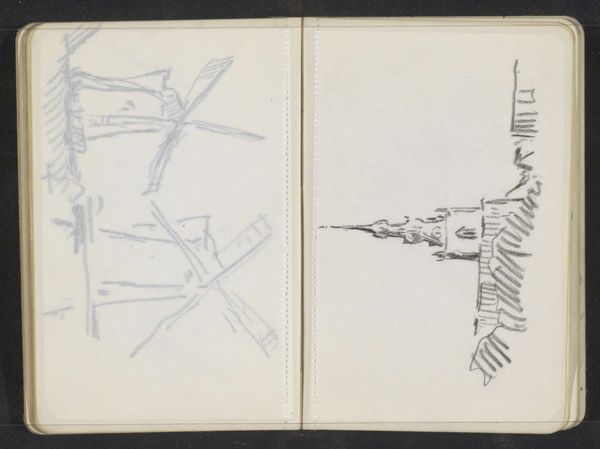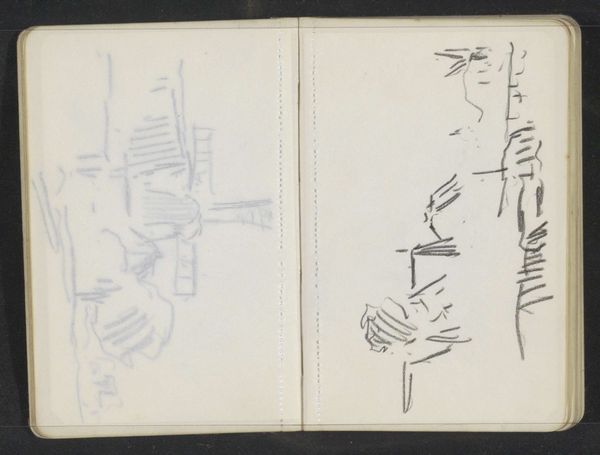
drawing, pencil
#
drawing
#
script typography
#
sketch book
#
hand drawn type
#
landscape
#
personal sketchbook
#
hand-drawn typeface
#
pen-ink sketch
#
pencil
#
line
#
pen work
#
sketchbook drawing
#
storyboard and sketchbook work
#
sketchbook art
Copyright: Rijks Museum: Open Domain
Curator: This is a sketchbook drawing entitled "Landschap met molen," or "Landscape with Mill," created around the 1909s by Alexander Shilling, employing both pencil and ink. Editor: Immediately striking is the contrast—one side ethereal and light, almost ghostly, the other sharp and defined. The medium feels very immediate and personal, doesn't it? Curator: Absolutely. It provides an intimate glimpse into Shilling's process, particularly how societal transformations influence artistic perception. The windmill, a historical tool of labor, is depicted through line and form, revealing evolving class dynamics and power relations in landscape representation. Editor: It really shows a study of forms. I wonder what kind of paper Shilling used in the sketchbook? It's that texture, and its ability to both accept and resist the pencil and ink, that truly brings forward the texture in these drawings. The skeletal-like quality also brings the realities of labor sharply into focus, right? Curator: Indeed. Beyond the paper itself, Shilling’s use of sketching invites a discussion about marginalization. The incomplete nature of sketches is interesting here. Who is seen, who is valued, and who is rendered only partially in society? What do these incomplete depictions tell us? Editor: What's fascinating is that each tool lends a completely different reading to the scene. There's a different tactility created between the almost delicate pressure and the quick movements from Shilling's pencil and ink work, right? Curator: That’s a poignant observation, yes. This connects directly to contemporary debates around ecological devastation linked to industry and extraction during this era. The presence of the mill underscores human exploitation and societal dependence on the land. Editor: Analyzing Shilling's materials offers, beyond social commentary, tangible experience, linking material reality to cultural critique. The contrast emphasizes how our understanding of resources transforms how we understand their political meanings. It makes us rethink relationships to production as well. Curator: Exactly. When viewed through the lens of identity, we can reconsider not just environmental responsibility but the societal frameworks that influence artistic interpretation. I think this dialogue invites us to see beyond landscapes. Editor: And see how material explorations enhance and redefine the socio-political relevance of art. We learn that the essence of landscapes aren't limited to observation, but it includes physical involvement, which influences our values today.
Comments
No comments
Be the first to comment and join the conversation on the ultimate creative platform.
